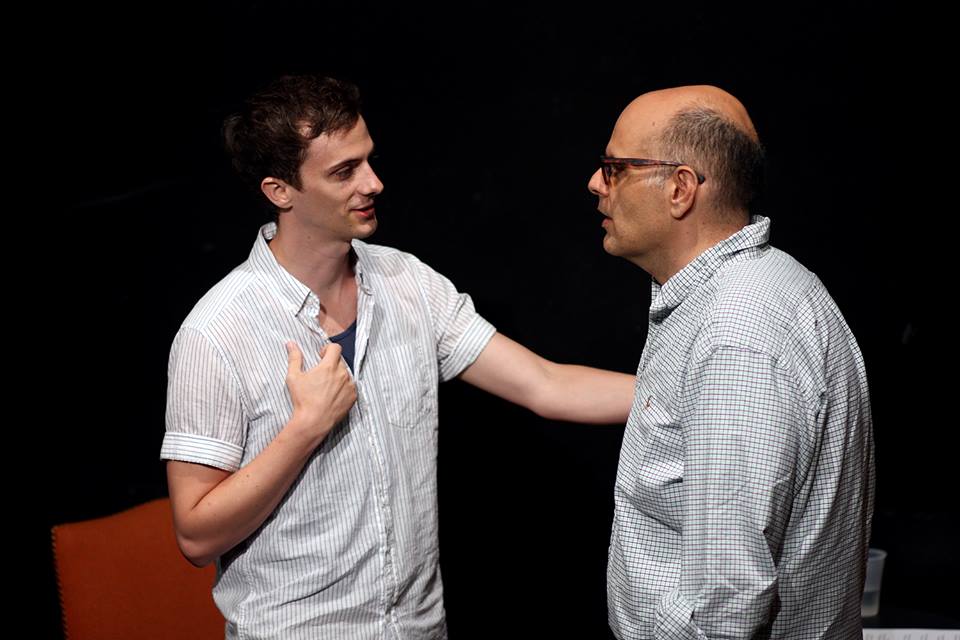Why You Need to Add Specifics to an Improv Scene

Improvisers have all heard that we need to add specifics to our improv scenes. Specifics are the fuel that keeps scenes going.
The more specifics we use, the easier it is to figure out what’s going on. Without specifics, we’re in “Vaugue-land” — not a good place to take our scene partners or the audience.
Specifics are as important as agreement. They are the second part of yes and…, the part we sometimes forget. Without specifics we do not have an improv scene.
So why do we avoid them? Easy. We are scared. We don’t want to make the wrong choice (like there is such a thing). Any choice is better than no choice. The same goes for specifics. The more detailed specifics we have, the more the opportunity we have for discovery and the more fun we will have.
For instance, let’s say I start a scene by saying, “It’s nice you showed up.” I really don’t know anything more about the relationship between me and my scene partner after uttering that sentence than I did before. I don’t know who my partner is or what they are showing up for. I have just bought a house in Vague-land.
By adding just a few specifics, I can make the scene much more vibrant.
For example, if I said, “Hey, Carol, it’s nice you showed up for Mom’s funeral,” I suddenly give both myself and my partner an attitude or point of view. I could be implying that my sister, Carol, never shows up for anything, and I’m giving her a bit of a dig. Or, I could be expressing relief that Carol is here because I am needy and want Carol’s support.
People think that adding specifics will limit their improv scenes, but in fact, by adding more clarity, you are able to more quickly discover information about your character.
But sometimes, people add too many specifics to a scene, and they end up steamrolling the whole thing and not giving their partner any room to make discoveries. This can be just as bad. Instead, you want to find the right balance of giving enough specifics so your partner can collaborate with you, but not too many that you flood your partner’s brain or become a bulldozer.
So, let’s say you leave off the part about Mom’s funeral and let your partner provide you with what you are doing together. You could start with one specific, such as the name, and then you can add a new specific in each line.
Here’s an example of a scene that gradually adds specifics:
Player 1: “It’s nice you showed up, Carol.”
Player 2: “Of course, Bill! I’m glad your operation was a success.”
Player 1: “Yeah, my leg will only be in a cast for two weeks.”
Player 2: “That’s great! You’ll be out in time for our wedding.”
In four short sentences, we know what their relationship is to each other, where they are located and a little bit about their point of view towards each other. The most important thing to remember is that we are adding specifics off of the last thing that was said. If we get in the habit of doing this at the top of each scene, we will be developing muscles that will give us stamina throughout the scene.
Remember, it is possible to overdo it. I have seen students add too many specifics and in the process, they lose the connection with their partner and the scene feels like a parlor game. Too many specifics becomes confusing. A rule of thumb: Use them when necessary.
Like most things in improv, there is no black and white to exactly how and when to add specifics; it’s all about balance. But my guess is if you are just starting out, it’s better to add more than less.
Here are three simple ways to add specifics to your improv scenes:
- Name your scene partner in the first couple of lines.
“Cal, we are all sorry for you loss.”
“Leslie, I’ve been waiting for you break up with me.” - Add simple descriptive details.
Change “I ran over your cat,” to “I backed my pick-up over Tabby.”
Change “I have a stain on my shirt” to “I have an ink stain on my favorite cranberry shirt.”
Change “Thanks for inviting me to your party,” to “Thanks, Steph, for inviting me to your Oscar Party.” - Add a specific to the last thing that your partner said.
Player 1: “I have a crush on you.”
Player 2: “I knew it, Jim! All the times you kept coming to my desk and asking me if you could use my stapler.”
Player 1: “I thought you would have caught on with all the lemon poppy seed muffins I left in your cubicle.”
Do you have other ways that you like to add specifics to a scene? Share it in the comments below!
Level up your improv game at Jimmy's next Scene Work Bootcamp on Nov. 2. Sign up today!


In you the example of scene specifics where player #2 says, "of course, Bill, I'm glad your operation was a success", I thought the operation was something to do with his business, so I would have taken the scene in a whole different direction...love improv